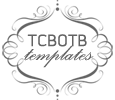Man, my
first graders are loving this book! It is very similar to “Bear Hunt” but in a different climate. The African
setting sets up good opportunities for students to be on many instruments, including
drums.
The plot of
the book is simple. Two girls go looking for a lion to hunt, but instead find
that they have to go through long grass (swish swash), a lake (splish splash) ,
a swamp (squish squash), and a cave (tip toe).
I start by
reading the book without sound effects, then with them. We review sound effects
and how we make them, and then read the story again with sound effects.
The next
step is my favorite: taking sound effects to instruments! With kindergartners I just tell them which instrument we should try, or give them a few to choose
from. But with first graders, they are on their own.
We look at four categories to determine which
instrument we should use:
- Loud or Quiet
- Long or Short
- Wood, Metal, or Other
- Click, Scrape, Ring, Jingle, or Rattle
My district
uses thinking maps, so I use a bubble map to get students thinking about how to
describe the sound. Then, we find an instrument that fits our map. I like using
the map, because it stops kids from choosing instruments just because they are
fun. I used to have students who wanted to pick the thunder tube for EVERY
sound, because they just liked it so much! This helps to streamline the process
and keep kids on track. Once we have instruments for the sounds, we do the book
again with sound effects.
Map 1 with the sound effect, map 2 with the instrument we choose that fits the adjectives.
Next, we add
melody:
I like using a pentatonic melody, but you could easily use the camp song melody.
Eventually,
we add in drums to the rhythm of the song. I have the students decide which
words should be a bass sound, and which ones should be a tone sound.
This is a
great book to do in class, or it can easily be extended to be a program.
I hope your
kids enjoy this book as much as I do!












